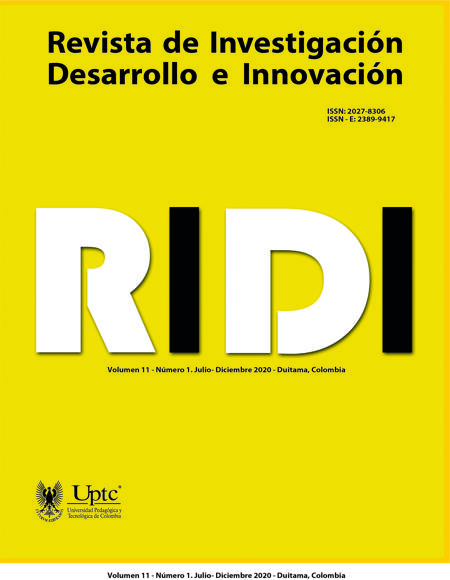Evaluation of a rubber nitrile stopper as container-closure system of Gavac® vaccine

Abstract
The chosen container-closure systems must be compatible with the preparation for which they are applied throughout their validity period. In the present work, the evaluation of the nitrile rubber stopper (RL8-9-105 / 0) was carried out in substitution of the acrylonitrile rubber stopper (FM84 / 5) as a container-closure system for the Gavac® immunogen. The statistical software Statgraphics® Plus 5.1 was used for data processing. A risk management analysis was carried out by means of a cause and effect diagram, the conformity of this cap with the quality specifications referred to in NP 1078 was determined, the physicochemical characteristics of both caps were compared according to the characteristics manufacturer's quality standard, the effect of placebo on the physical properties of the stopper was determined and the container-closure system using the nitrile rubber stopper was evaluated by means of a tightness test and a sterility test. It was concluded that the RL8-9-105 / 0 nitrile rubber stopper can be used as a container-closure system for the Gavac® immunogen, without affecting its main quality parameters.
Keywords
quality;, sterility;, impermeability;, Gavac®vaccine
Author Biography
Amaury Pérez-Sánchez
Ingeniero Químico, Estudiante de Maestría en Biotecnología
Arlenis Alfaro-Martínez
Ingeniera química, Estudiante de Maestría en Análisis de Procesos Químicos
Rutdali María Segura-Silva
Ingeniera química, Magíster en Análisis de Procesos Químicos
Jesús Zamora-Sánchez
Radioquímico, Magíster en Microbiología
Eikel Pérez-González
Ingeniero químico, Magíster en Procesos Biotecnológicos
Lidiana Martínez-Armas
Licenciada en Veterinaria
Diasmarys Salinas-Rodríguez
Licenciada en Veterinaria
Alain Moreira-Rubio
Ingeniero químico, Magíster en Medio Ambiente
References
Booth, C. (2016). Understanding Container Closure Integrity Testing. Recuperado de: https://www.americanpharmaceuticalreview.com/Featured-Articles/239498-Understanding-Container-Closure-Integrity-Testing/
Canales, M., Enriquez, A., Ramos, E., Cabrera, D., Dandie, H., Soto, A., Falcón, V., Rodríguez, M., & de la Fuente, J. (1997). Large-scale production in Pichia pastoris of the recombinant vaccine GavacTM against cattle tick. Vaccine, 15 (4), 414-422. doi: 10.1016/S0264-410X(96)00192-2.
Canales, M., Pérez, J. M., Naranjo, V., Nijhof, A. M., Hope, M., Jongejan, F., & de la Fuente, J. (2008). Expression of recombinant Rhipicephalus (Boophilus) microplus, R. annulatus and R. decoloratus Bm86 orthologs as secreted proteins in Pichia pastoris. BMC Biotechnology, 8 (14), 1-12. doi: 10.1186/1472-6750-8-14.
Centro de Ingeniería Genética y Biotecnología, CIGB. (1992). Ensayo de esterilidad (Método directo) (PPO 4.09.028.92). Camagüey, Cuba: CIGB.
Centro de Ingeniería Genética y Biotecnología, CIGB. (1992). Tapón de caucho acrilonitrilo, negro, 20 mm, tipo II (NP 1078). Camagüey, Cuba. CIGB.
Centro de Ingeniería Genética y Biotecnología, CIGB. (2003). Preparación de los materiales utilizados en la filtración esterilizante del IFA (PPO 2.14.011.03). Camagüey, Cuba: CIGB.
Centro de Ingeniería Genética y Biotecnología, CIGB. (2006). Determinación de Características Organolépticas a emulsiones oleosas (PPO 2.31.249.06). Camagüey, Cuba. CIGB.
Centro de Ingeniería Genética y Biotecnología, CIGB. (2006). Llenado y retapado del Inmunógeno Gavac® utilizando la llenadora modelo EDM 520 y la retapadora modelo HV-100, ambas de la firma BAUSCH + STROBEL. (PPO 2.14.801.06). Camagüey, Cuba: CIGB.
Centro de Ingeniería Genética y Biotecnología, CIGB. (2009). Formulación y llenado de los lotes placebo de Gavac® (PPO 2.14.805.09). Camagüey, Cuba: CIGB.
Centro de Ingeniería Genética y Biotecnología, CIGB. (2012). Ensayo de hermeticidad en sistemas de envase-cierre (PPO 2.31.273.12). Camagüey, Cuba: CIGB.
Centro de Ingeniería Genética y Biotecnología, CIGB. (2017). Sello de fácil apertura de aluminio y plástico color carmelita, 20 mm (NP 1317). La Habana, Cuba: CIGB.
Coccia, M. (2017). The Fishbone diagram to identify, systematize and analyze the sources of general purpose technologies. Journal of Social and Administrative Sciences, 4(4), 291-303. doi: 10.1453/jsas.v4i4.1518.
De la Fuente, J., Rodríguez, M., Montero, C., Redondo, M., García-García, J. C., Méndez, L., Serrano, E., Valdés, M., Enríquez, A., Canales, M., Ramos, E., Boué, O., Machado, H., & Lleonart, R. (1999). Vaccination against ticks (Boophilus spp.): the experience with the Bm86-based vaccine Gavac™. Genetic Analysis: Biomolecular Engineering, 15, 143–148. doi: 10.1016/s1050-3862(99)00018-2.
Duncan, D. (2019). Container Closure Integrity Testing of Finished Sterile Injectable Product. Pharmaceutical Technology, 43(9), 38-41.
European Pharmacopoeia, EP. (2008). 3.2.9. Rubber Closures for Containers for Aqueous Parenteral Preparations, for Powders and for Freeze-Dried Powders (01/2008:30209): European Pharmacopoeia 7.0.
Ewan, S., Jiang, M., Stevenson, C., Henderson, O., Klohr, S., Wessel, M., Mehta, P., Adler, S., Lake, C., Walsh, J., Polomene, T., & Everaert, V. (2015). Container Closure Integrity Control versus Integrity Testing during Routine Manufacturing. PDA Journal of Pharmaceutical Science and Technology, 69(3), 461-465. doi: 10.5731/pdajpst.2015.01071
Farmacopea. (2007). Farmacopea de los Estados Unidos de América USP 30-NF 25 (Vol. 1). Rockville, MD: The United States Pharmacopeial Convention.
Food and Drug Administration, FDA. (2008). Guidance for Industry: Container and Closure System Integrity Testing in Lieu of Sterility Testing as a Component of the Stability Protocol for Sterile Products. Rockville, MD: FDA.
Helvoet. (2006). Compound Data Sheet FM84/5 Black Stopper, 3. Alken, Belgium: Helvoet Pharma.
Helvoet. (2009). Compound Data Sheet RL8-9-105/0 Grey Stopper 4. Alken, Belgium: Helvoet Pharma.
International Conference on Harmonisation, ICH. (2005). ICH guideline Q9 on quality risk management. London: European Medicines Agency.
International Organization for Standardization, ISO. (2009). Biological evaluation of medical devices - Part 5: Tests for in vitro cytotoxicity 10993-5. Geneva, Switzerland: ISO.
Nieto, A., Roehl, H., Adler, M., & Mohl, S. (2018). Evaluation of Container Closure System Integrity for Storage of Frozen Drug Products: Impact of Capping Force and Transportation. PDA Journal of Pharmaceutical Science and Technology, 72(6), 544-552. doi: 10.5731/pdajpst.2017.008383.
Nieto, A., Roehl, H., Brown, H., Nikoloff, J., Adler, M., & Mahler, H.-C. (2016). Evaluation of Container Closure System Integrity for Frozen Storage Drug Products. PDA Journal of Pharmaceutical Science and Technology, 70(2), 120-133. doi: 10.5731/pdajpst.2015.006098.
Patiño, R., Silva, J. d., & Pérez, J. (2011). Modelos de predicción de exigencias minerales para rumiantes. Revista Colombiana de Ciencia Animal, 3 (2), 344-365.